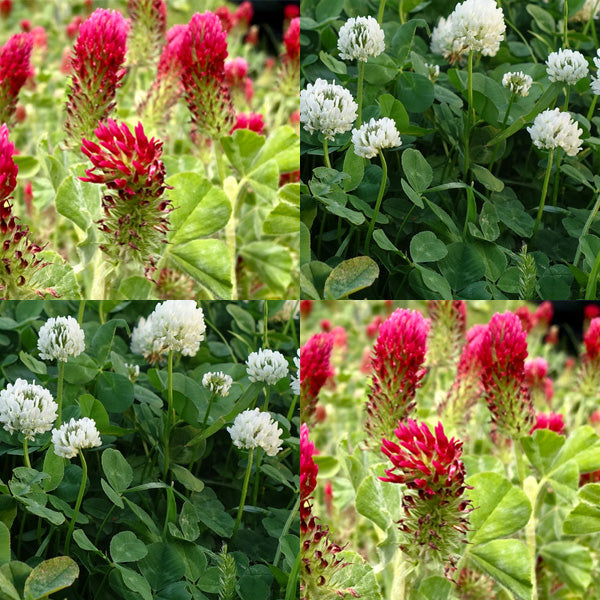This month we are exploring the why's and wherefores of Green Manure.
Although they may well have other uses, green manure is grown to build and maintain soil structure and fertility. Once grown they are then incorporated back into the soil, either by digging in or digging up and adding to your compost for use later on. More and more people in the UK are turning to green manure, especially those wanting a more natural approach.
Let's start with what is a green manure?
Basically a group of plants you can grow for the benefits they bring to the ground more than for the crop they may provide. Although some, happily for us, do both.
Legume Based
From the clover family, legumes develop nodules on their roots which have the ability to convert nitrogen from the air and convert it to a soil based form the plants can use once they have been dug into the soil.
- Red Clover - use in rotation and undersowing
- White Clover- undersowing
- Beans - overwinter
- Peas - crop and compost
- Lupins - masses of nitrogen, dig in
Non-Legumes
These do not fix nitrogen but do provide very useful organic matter which can help to retain nutrients. They can also be very quick growing and so can be used in gaps between harvesting one crop and sowing the next.
- Mustard - short term catch crop
- Radish - autumn sown and overwintered
- Sunflower - sow late spring and incorporate into the soil
Some do use brassicas as a green manure but they should not be sown in areas where you plan to grow a brassica crop due to the increased risk of clubroot.
Now for the Why's:
- supplying nitrogen and other nutrients for the next crop
- ground cover to smother weeds, preventing further weed growth and to prevent damage to the soil structure
- preventing soluble nutrients from being leached from the soil
- building the organic matter levels within the soil structure
- bringing up crop nutrients from lower levels within the soil via the green manure root systems
One common practice when breaking new ground is to start off with a green manure. If you are going to incorporate (dig in) rather than compost, then this should be done before they set to seed and whilst the foliage is still soft and green.
You want to only want to dig in through the top few centimetres as this is where the root system of your next crops will be and it is also where soil organisms are most active.
If you have very lush growth, cut and leave to wilt as a mulch and then dig in as above.
At Seeds To Suit, in line with our "no waste" ethos, you can buy a Red & White Clover mix in packets to cover 1 square metre - perfect for your raised beds and allotment sections. If you search Green Manure then all products that fall into that category will come up for you and you can choose at leisure.
We hope you find this blog useful and we will see you again further on down the garden path!
Sandra

